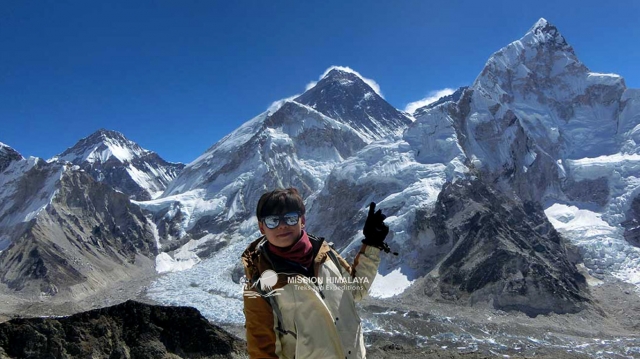Introduction
The Everest Base Camp (EBC) trek stands as a pinnacle in the world of adventure travel, attracting thousands of trekkers each year to the awe-inspiring landscapes of the Himalayas. However, amidst its allure lies a common perception of danger, fueled by tales of altitude sickness, extreme weather, and treacherous terrain. In this blog, we'll delve into the reality behind the perceived dangers of the EBC trek, separating fact from fiction and providing insights into the true nature of this iconic journey.
Understanding the Perceived Risks
Before we dive into the safety considerations of the EBC trek, it's crucial to address the perceived risks that often deter potential trekkers. These include concerns about altitude sickness, extreme weather conditions, avalanches, and the overall physical and mental challenges of trekking to high altitudes. While these risks are not unfounded, they can be managed and mitigated with proper preparation, precaution, and adherence to safety guidelines.
Altitude Sickness
Altitude sickness, also known as acute mountain sickness (AMS), is a common concern for trekkers on the EBC route. Symptoms can range from mild headaches and nausea to more severe conditions like high-altitude pulmonary edema (HAPE) and high-altitude cerebral edema (HACE). However, the risk of altitude sickness can be significantly reduced by following proper acclimatization protocols, ascending gradually, staying hydrated, and recognizing and responding to symptoms promptly.
Extreme Weather Conditions
The weather in the Everest region can be unpredictable and harsh, with conditions ranging from sunny and clear to cold, windy, and snowy. Trekkers may encounter sub-zero temperatures, high winds, and sudden changes in weather, especially at higher altitudes. While adverse weather conditions can pose challenges, trekkers can minimize their impact by packing appropriate clothing and gear, staying informed about weather forecasts, and adjusting their itinerary if necessary to avoid inclement weather.
Terrain Challenges
The terrain on the EBC trek varies from well-defined trails to rocky paths, steep ascents, and high mountain passes. Trekkers must navigate challenging terrain, including suspension bridges, moraines, and glacial morasses, which can be physically demanding and mentally taxing. However, with proper trekking techniques, footwear, and trekking poles for stability, many of these challenges can be overcome safely.
Safety Measures and Precautions
Despite the perceived risks, the EBC trek can be undertaken safely with careful planning, preparation, and adherence to safety guidelines. Here are some key safety measures and precautions to consider:
-
Physical Fitness: Maintain a good level of physical fitness and stamina through regular exercise and training before embarking on the trek.
-
Acclimatization: Allow sufficient time for acclimatization by ascending gradually and incorporating rest days into your itinerary.
-
Hydration and Nutrition: Stay hydrated and well-nourished throughout the trek by drinking plenty of water and consuming nutritious meals and snacks.
-
Altitude Medication: Consider taking preventive medication such as acetazolamide (Diamox) to help prevent altitude sickness.
-
Weather Awareness: Stay informed about weather forecasts and be prepared to adjust your plans accordingly in response to changing weather conditions.
-
Trekking Gear: Invest in high-quality trekking gear, including sturdy hiking boots, warm clothing, waterproof outerwear, and essential equipment such as a headlamp, trekking poles, and a first-aid kit.
-
Experienced Guides: Consider hiring an experienced guide or joining a guided trekking group to enhance safety and navigation, particularly if you're unfamiliar with the terrain or altitude.
-
Travel Insurance: Obtain comprehensive travel insurance that covers trekking at high altitudes, including emergency medical evacuation and treatment for altitude-related illnesses.
Conclusion
In conclusion, while the Everest Base Camp trek presents certain risks and challenges, it is not as dangerous as it may sound with proper preparation, precautions, and adherence to safety guidelines. By understanding the potential risks, taking appropriate measures to mitigate them, and staying vigilant throughout the journey, trekkers can embark on this iconic adventure with confidence and peace of mind. Ultimately, the rewards of experiencing the majestic beauty of the Himalayas and reaching the base of the world's highest peak far outweigh the perceived dangers, making the EBC trek a truly unforgettable and life-affirming experience.






